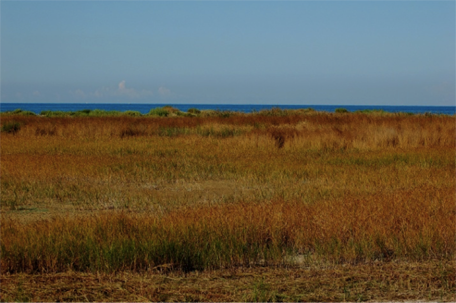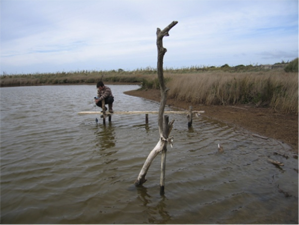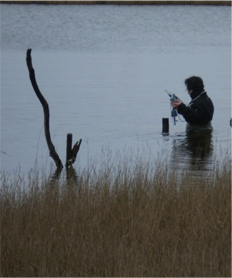Batterioplancton di Macchiatonda

Le zone umide rivestono grande importanza per il loro ruolo nel miglioramento della qualità delle acque e per il supporto che fornisce alla biodiversità. Attualmente, lo studio delle dinamiche di questo particolare tipo di ambienti riveste grande interesse in quanto si è determinata un’inversione di tendenza rispetto alle zone umide: negli ultimi anni, infatti, non solo non sono state prosciugate ma ne sono state create di nuove, anche in aree in cui non erano presenti. La corretta gestione e il valore ecologico/naturalistico di queste aree dipendono dalla presenza di appropriate comunità microbiche. Scopo di questo progetto è conoscere e gestire i cambiamenti in relazione alla variazione dei fattori abiotici e biotici. L’analisi delle comunità microbiche rappresenta uno studio di base perché poco è noto a questo riguardo, ma ha anche una connotazione gestionale perché, sulla base di queste conoscenze, è possibile intervenire nel caso di derive imposte dai fattori ambientali. Lo studio della dinamica del batterioplancton nelle zone umide del Parco Naturale di Macchiatonda, incluso lo studio del possibile trasporto di microrganismi resistenti da parte della fauna avicola di passo, è stato ritenuto progetto di interesse strategico per la zona ed è stato finanziato dalla Fondazione CARICIV (Cassa di Risparmio di Civitavecchia). Il progetto si svolge nella splendida cornice dell’area umida della Riserva Naturale Regionale di Macchiatonda (Santa Severa, Roma) in stretta collaborazione con il Direttore del Parco, Domenico “Mimmo” D’Amelia e con il suo gruppo di entusiasti e fattivi guardaparco.
Evangelisti M., D’Amelia D., Di Lallo G., Thaller M.C., Migliore L. (2013) THE RELATIONSHIP BETWEEN SALINITY AND BACTERIOPLANCTON IN THREE RELIC COASTAL PONDS (Macchiatonda wetland, Italy). Journal Water Resource and Protection, 5(9): 859-866. DOI:10.4236/jwarp.2013.59087.
The great environmental importance of wetlands is linked to the high biodiversity of flora and fauna they support, so that the international Ramsar Convention, already in 1971, focused on these areas and highlighted the need to preserve them. Although the bacterial communities that thrive in these ecosystems play a key role in regulating the local biogeochemical processes, their distribution, abundance and dynamics are yet poorly known. This work is aimed to study the bacterial assemblages during the year, to contribute to the understanding of the natural processes occurring in wetlands at variable salinity. The presence of bacterial groups, species or assemblages, indeed, could provide a useful bioindicator for conservation and restoration efforts. The wetland in the Macchiatonda Natural Reserve (Santa Severa, Rome, Italy) is a relic ecosystem, once found all along the Tyrrhenian coast. This wetland encompasses three coastal ponds at different salinity, where both peculiar vegetation and highly diverse migratory and resident avifauna can be found. This ancient system has been scarcely investigated and nothing is known about its microbial community. Out of the three ponds, two are located close to the waterline and exposed to marine ingressions; the third one is located more inland is not exposed to direct seawater input. The molecular metagenomic analyses performed to investigate the salinity/bacterioplankton relationship, highlighted differences in the bacterial structure, between ponds and seasons. Analogous trends in SSCP profiles, Shannon Index, and bacterial composition (16S) were observed in the two saltier ponds , whereas the entire set of results was different for the less salty one. The species diversity in the three ponds varied according the salinity gradient, with the maximum diversity corresponding to a salt concentration range between 20 and 30. At higher and lower salinity, the microbial diversity lowers, according to the ‘Intermediate Disturbance Hypothesis’.

Stagno Alberobello

Stagno Piscinula

